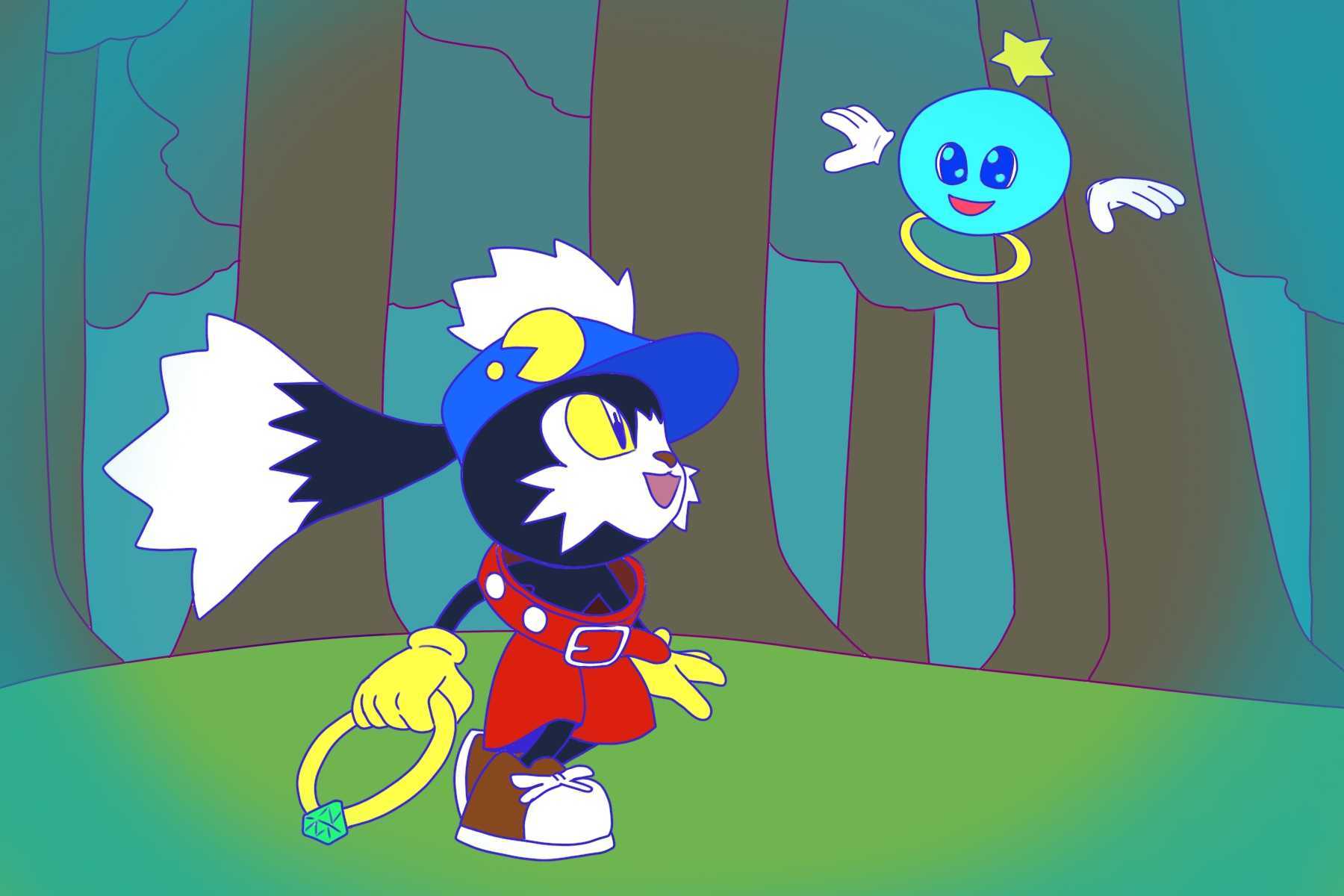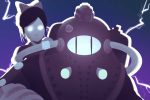The last release in the Klonoa franchise was far back in 2008. It was a Wii remake of the first game, Klonoa: Door to Phantomile, which was meant to reinvigorate interest in a franchise largely ignored by most video game players. The game did fairly well among critics and Klonoa fans, with only a few minor complaints (one being that Klonoa, who is supposed to be a young child, sounded more like a teen who’s in the midst of puberty). Sadly, its sales were not enough to convince Bandai Namco to continue pushing forward. 2008’s Klonoa would serve as the last entry in the Klonoa franchise — at least until now.
Klonoa Phantasy Reverie Series, released in early July 2022, exists as a collection of two remastered Klonoa games: the 3D side-scroller Klonoa: Door To Phantomile and its sequel, Klonoa 2: Lunatea’s Veil. When news of the game first came to light, longtime fans were more than elated to finally see their favorite (cat? rabbit?) hero take the stage once again. With the power of social media at their fingertips, fans quickly spread the news of the upcoming game in hopes of attracting new players, spreading the hashtag #KLONOASWEEP on Twitter and posting memes and fan art. Their dedication seemed to have paid off: When the series was finally released, it became a top seller on Steam, even surpassing games like the smash success Elden Ring. And just like 2008’s Klonoa, the Phantasy Reverie Series succeeded in delivering fans the Klonoa they know and love, this time without the teen voice.
What exactly is Klonoa? Klonoa is a series of fantasy games about a cute, furry critter named, well, Klonoa. Kindhearted and brave, Klonoa never backs down from danger and is always willing to help. As the fated “Dream Traveler,” Klonoa is constantly swept into different worlds that are held up by the power of lost dreams. Whenever the power of dreams is at stake, Klonoa arrives to make things right. Every adventure has the young hero meet new friends and face new enemies, and no adventure is quite the same.
If you have a passion for cuteness, these games have got you covered. Besides Klonoa, every character has, to some degree, a level of cuteness that will melt your heart. Even the game’s enemies are too adorable to take too seriously. Of course, there is such a thing as too much, and when Klonoa: Door to Phantomile was released, critics felt the cuteness was a little too excessive and distracting. You read that right: The critics actually thought the game was too cute to fully enjoy. When the sequel was released a few years later, the cuteness was slightly toned down to appeal to older audiences.
But just because the game is cute doesn’t mean it’s totally immature. Surprisingly, despite the vibrant, cutesy exterior, the games tackled some mature subject matter. Concepts such as growing up, facing the harsher aspects of reality and embracing the importance of sadness are all on full display and handled quite well for games targeted primarily at children. There is no fluff, no holding back — the games handle these themes with respect for the players. With such simple but compelling themes, it’s no wonder that adults still return to the games today.
Klonoa: Door to Phantomile was released for the PlayStation One in 1997. The game follows a young and innocent Klonoa living in the idyllic world of Phantomile, a place held up by dreams. One day, while exploring the woods, Klonoa witnesses an object fall from the sky and hit the ground, an object that turns out to be a gold ring with an emerald gem. This gem contains an entity named Huepow, and the two become fast friends.
Sometime later, a flying ship crashes into the nearby Bell Hill, and Klonoa and Huepow leave their house to investigate. While on their way, they pass a great statue, which they learn is of the Songstress Lephise, who sings the “Song of Rebirth” to bring life and vitality to Phantomile. As it turns out, the ship belongs to the Songstress, but before Klonoa and Huepow can reach her, somebody else beats them. Ghadius, the king of darkness, captures the Songstress so he can transform Phantomile into a realm of never-ending nightmares. After battling his wicked henchman, Joka, the duo discovers the sacred Moon Pendant, carefully hidden by the Songstress. To learn its purpose and hopefully stop Ghadius’ plans, the duo sets off on a journey all across Phantomile.
Five years after Door to Phantomile, Klonoa 2: Lunatea’s Veil was released for the PlayStation 2. Klonoa, now a young teen, falls from the sky and plummets into the stormy Sea of Tears, the golden ring from Door to Phantomile clutched in his hand. Before he can drown, he is quickly rescued by two people, the young priestess-in-training Lolo and her hot-headed companion Popka. With their help, Klonoa escapes the dangers of the Sea of Tears and learns he is in Lunatea.
On a peaceful island, Lolo manages to ring the “Spirit Bell,” a power only true priestesses possess. The trio consults the wise Baguji, who tells Klonoa of the four Harmony Bells located in the four kingdoms of Lunatea. As their name suggests, these Bells bring harmony to the land, but a fifth Bell, a Bell unknown to Lunatea, is arriving soon. This Bell has brought monsters into the world and threatens to bring chaos to the four kingdoms, so Baguji sends the trio off to consult the High Priestess. The High Priestess, after granting Lolo the official title of priestess, sends the trio off to ring each of the Harmony Bells. Reaching each Bell is hard enough, but making things worse are the sky pirates Leorina and Tat, who have their eye on Klonoa’s ring.
What makes this golden ring so special? This ring, known as the Wind Ring, acts as Klonoa’s main weapon. Powered first by Huepow and then by Lolo, the Ring has the ability to capture and inflate enemies so that Klonoa can carry and toss them around with little effort. Klonoa can also use the ring’s power to perform double jumps, select items like health and clocks (which serve as checkpoints), and turn switches. This ring has always accompanied Klonoa wherever he goes, but unfortunately, his memories of the past are left behind whenever he leaves the world. Only a few small fragments of these previous worlds remain lodged in his memory like faded dreams.
Don’t expect either Klonoa game to be as long as, say, a Dark Souls game. If you were to play both games back-to-back, you would finish both in about seven to eight hours. But don’t let the shorter runtimes discourage you from playing — there is more than enough content to enjoy in both to give you a fully satisfying experience. There’s no filler, no useless side quests and no padded cutscenes; every passing moment feels as though it has a place in the game. Removing them or passing over them would only hinder the experience.
Vibrant, sharp and bursting with beautiful imagination, the graphics of the original two games truly help transport you to worlds only seen in dreams. Some of the worlds may appear generic, but others stand out, such as a mirror house reminiscent of an MC Escher painting and a watery kingdom with massive shells for buildings. In the Phantasie Reverie Series, the graphics have been updated to make them crisper and more vibrant, but a few small details have been removed. For one, the stylish black outlines on the character models for Klonoa: 2 have been removed. Still, the remaster does a faithful job of capturing the magical essence of the two classic games.
The mechanics of Klonoa: Door to Phantomile are simple yet engaging. Both games are split up into levels known as Visions. Through each Vision, all you have to do is travel from point A to point B, but don’t expect it to be easy — in every Vision, you’ll find yourself parkouring, dodging obstacles, throwing enemies and solving small puzzles. The first few Visions seem like a piece of cake, but they’ll grow more difficult as you progress. The same can be said for bosses — you think they’ll all be a breeze after beating the first one, but as you push onward, they become harder. You might even die once or twice.
While traveling through a Vision, you’ll notice some green and blue crystals scattered on your trail. These are dream stones, and they can be collected to receive an extra life. Every Vision contains 150 of these stones. You can also rescue Phantomilians imprisoned within nightmares taking the form of golden sigils encased in bubbles. Rescuing every Phantomilian grants you an exclusive Vision with some challenging gameplay.
Every now and then, you might find that you’ve jumped a little too early and now run the risk of falling, or maybe you want to collect a dream stone that’s just out of reach. Should this ever happen, you can have Klonoa hover in the air by flapping his large, floppy ears for a short time, giving you a few extra seconds of airtime.
Klonoa 2’s mechanics largely function the same as the first game, but there are a few additions. For one, Klonoa can now surf through certain levels using a board, and he can now fire himself to unreachable destinations by hopping into cannons. Also, instead of rescuing Phantomilians, Klonoa now collects the broken pieces of Momett Dolls, who ran away from their master Momett to find more memories. Piecing together enough dolls rewards you with an extra Vision.
Once the games have been beaten, hard mode is activated. Here, you can test your skills and see if you can survive the game with just one piece of health. You can also re-watch the games’ cutscenes and re-fight your favorite bosses at your leisure.
Putting down your controller, you might find that your thirst for some Klonoa content still goes unquenched. Don’t worry — there are several other games that may satisfy your thirst. First are the 2D side-scrollers for hand-held consoles: Midnight Museum, Empire of Dreams and Klonoa 2: Dream Champ Tournament. These act as sequels or prequels to the original games but you aren’t necessarily required to play them. Next up are the games not closely tied to Klonoa’s main timeline but are fun to enjoy, nonetheless. These are Klonoa Heroes: Densetsu no Star Metal, an RPG set in an alternate universe, and a sports game titled Klonoa Beach Volleyball.
Outside of the games, Klonoa has seen some exposure. A webcomic named Klonoa: Dream Traveler of Noctis Sol published weekly installments on its own website, telling the story of how Klonoa and all his past friends come together to stop the villainous Tenebrae Hue in his quest to rule Lunatea and Phantomile. Unfortunately, the comic had to be canceled at the worst of places in the storyline — a cliffhanger — and the website was shut down. Fortunately, it was preserved for fans new and old to enjoy, and a group of dedicated artists has decided to pick up the story with their own fan continuation. A film was also planned to adapt the first game’s story, but it was scrapped even before it could properly begin. Only a few pieces of concept art remain, and the reason for its cancellation remains a mystery.
It’s a shame that Klonoa hasn’t received the recognition it deserves. Both Door to Phantomile and Lunatea’s Veil were games acclaimed for their stories and gameplay, and even the spin-offs and hand-helds were commended. With little promotion before the release of the Phantasy Reverie Series, it seems Bandai Namco’s lost faith in Klonoa. Fans worry this may be the last release in the Klonoa franchise for a long time, but some still cling to the hope that Klonoa Phantasy Reverie Series will serve as a wake-up call to Bandai Namco. Hopefully, it will finally bring back everyone’s favorite, long-eared dreamer once again –– and keep going with him for a long, long time.
Klonoa Phantasy Reverie Series is currently available for platforms such as the Nintendo Switch, PlayStation 4, Xbox One and Microsoft Windows.
















